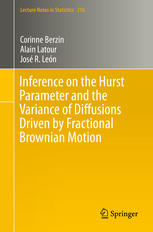

Most ebook files are in PDF format, so you can easily read them using various software such as Foxit Reader or directly on the Google Chrome browser.
Some ebook files are released by publishers in other formats such as .awz, .mobi, .epub, .fb2, etc. You may need to install specific software to read these formats on mobile/PC, such as Calibre.
Please read the tutorial at this link: https://ebookbell.com/faq
We offer FREE conversion to the popular formats you request; however, this may take some time. Therefore, right after payment, please email us, and we will try to provide the service as quickly as possible.
For some exceptional file formats or broken links (if any), please refrain from opening any disputes. Instead, email us first, and we will try to assist within a maximum of 6 hours.
EbookBell Team

4.4
12 reviewsThis book is devoted to a number of stochastic models that display scale invariance. It primarily focuses on three issues: probabilistic properties, statistical estimation and simulation of the processes considered.
It will be of interest to probability specialists, who will find here an uncomplicated presentation of statistics tools and to those statisticians who wants to tackle the most recent theories in probability in order to develop Central Limit Theorems in this context; both groups will also benefit from the section on simulation. Algorithms are described in great detail, with a focus on procedures that is not usually found in mathematical treatises. The models studied are fractional Brownian motions and processes that derive from them through stochastic differential equations.
Concerning the proofs of the limit theorems, the “Fourth Moment Theorem” is systematically used, as it produces rapid and helpful proofs that can serve as models for the future. Readers will also find elegant and new proofs for almost sure convergence.
The use of diffusion models driven by fractional noise has been popular for more than two decades now. This popularity is due both to the mathematics itself and to its fields of application. With regard to the latter, fractional models are useful for modeling real-life events such as value assets in financial markets, chaos in quantum physics, river flows through time, irregular images, weather events and contaminant diffusion problems.